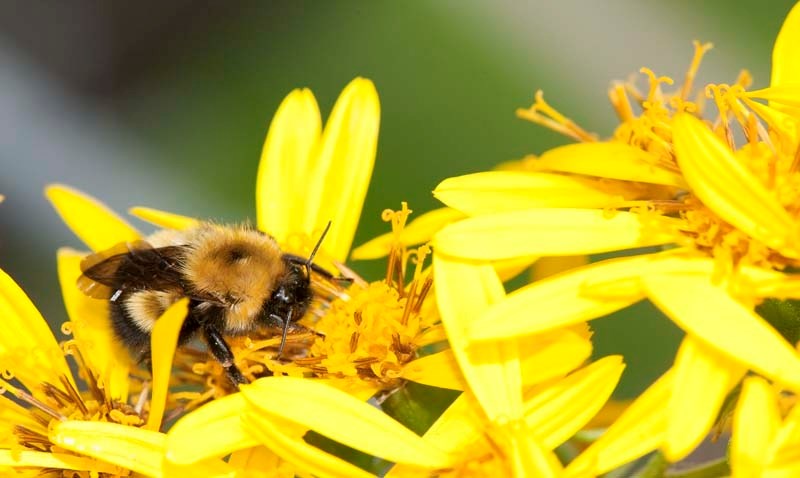Beekeepers were abuzz last week about neonicotinoids – an insecticide that one prominent local bee specialist says is just one of the many threats to the health of Alberta's bees.
About 100 people gathered at the Fantasyland Hotel in Edmonton for the annual Beekeeping for the Future conference organized by Alberta Agriculture and the Alberta Beekeepers Commission.
Hosted by provincial apiculturist (bee scientist) Medhat Nasr, it looked at the latest hot topics in beekeeping.
This year, that meant neonicotinoids – a controversial class of insecticide that's been blamed for killing bees en masse.
Neonicowhats?
Neonicotinoids, or neonics, are neurotoxins used to kill bugs, explained Madeleine Chagnon, an environmental scientist with the University of Quebec who spoke at the conference.
Bees get exposed to the stuff through pollen, nectar, dust and dew.
The federal Pest Management Regulatory Agency (PMRA) launched an investigation into the substance in 2012 and 2013 after Ontario and Quebec beekeepers had unusually large die-offs in areas planted with corn treated with neonics.
It found that about 75 per cent of the dead bees had residues of those pesticides on them, and concluded that most of them died due to insecticide-contaminated dust.
A study by Chagnon of bees in the Ontario/Quebec region found that bees exposed to neonicotinoid-treated crops were about four times more likely to die than those who were not.
"This is chronic," she said – the chemicals increase the number of dead bees per day and reduce honey production, but don't wipe out hives entirely, making it hard to spot their effects.
She also found evidence that the chemicals could persist in the environment. Puddles near hives tested about a month after seeding had about six times the lethal amount of neonics for bees in them, suggesting the chemicals had leached out of the soil.
Should we worry?
About 99 per cent of all corn and 75 per cent of soybean seeds planted in Quebec are treated with neonics, Chagnon said. (These are not common crops in Alberta.)
Unlike other regions, Alberta mainly uses neonics as a seed treatment rather than as a spray, said Scott Meers, a provincial crop pest specialist who spoke at the conference.
"Canola is the only (crop) where it's used all the time," Meers said. "You cannot even buy canola seed right now without neonics on them."
Alberta has had only a small number of bee deaths attributed to neonics, said Nasr, who lives in St. Albert. The ones that have occurred have all happened because of improper pesticide use.
One reason may be timing, he continued. Most of the dead bees out east were exposed to neonics due to dust released during seeding, which happened while the bees were active. As Albertans seed canola way before bees start buzzing, that may limit the bugs' exposure.
While the European Union has brought in a two-year ban on some neonics due to their effects on bees, the PMRA is holding off on one for now in favour of a re-evaluation of the product's safety. This year, it has also brought in new labelling and seed planting requirements for neonic-related products, including a requirement that seeders use a lubricant meant to reduce the release of dust.
Nasr urged beekeepers not to blame neonics or the farmers who use them for their losses yet, as researchers had just scratched the surface of this issue.
"We have to do this basic research instead of pointing the finger at each other."
Neonics are just one hole in the very leaky boat that is bee health, Nasr said. Pesticide-resistant varroa mites, the fungi nosema apis, poor nutrition and stress from relocating hives are all contributors to Alberta's bee woes.
"We have to consider all the factors to help the bees," he said. By promoting better bee care, the province has managed to cut winter bee mortality to 20 per cent since 2010.
Nasr encouraged beekeepers to work closely with farmers and teach them what bees need to stay healthy.
Farmers, meanwhile, should only use pesticides when absolutely necessary, Meers said.
"If they prophylactically spray, they're taking out the natural predators that really control the (pest) populations."
About one-third of the food we eat comes from crops pollinated by bees, Nasr said.
"If we lose the bees today … that will affect the quality of diet we have."




